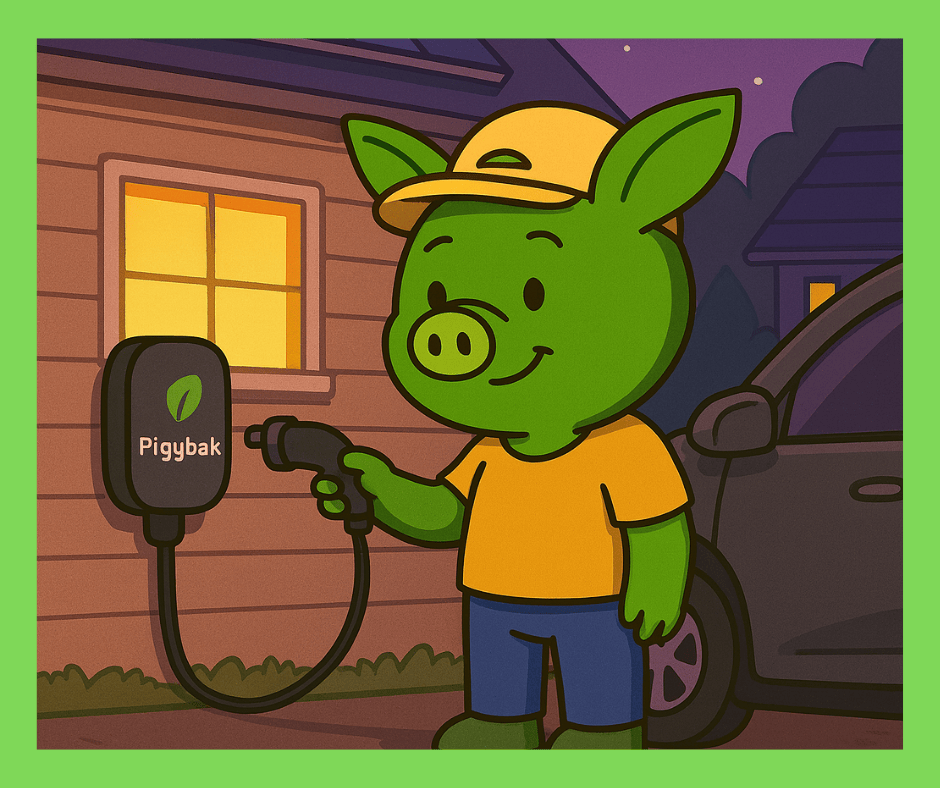1. Schedule an Energy Audit and Home Inspection
An energy audit is the first step to understanding how energy-efficient your home is—and where you can improve.
💡 Why It’s Worth It:
- Costs: $300–$500 (one-time).
- Savings: Hundreds to thousands annually by identifying energy leaks.
- Tip: Many utility companies offer free or discounted energy audits, so check with your provider.
🌱 Learn more about energy audits from the Department of Energy.
2. Seal Leaks and Upgrade Insulation
Did you know that drafts around windows and doors can increase heating and cooling costs by up to 20%?
💡 What to Do:
- Seal cracks with caulking or weatherstripping.
- Add insulation in attics, walls, and basements.
💵 Costs: $1,000–$2,000.
💰 Savings: Up to 20% on energy bills annually.
DIY Tip: If you’re handy, this can be a weekend project. Or, use Pigybak to find a local handyman and save time.
3. Upgrade to Energy-Efficient Lighting
Switching to LED or CFL bulbs is one of the easiest ways to cut energy costs.
💡 The Numbers:
- Cost: $50–$100 to replace your entire home’s bulbs.
- Savings: Around $50–$100 per year on electricity bills.
🌱 Explore Resources: Check out the Department of Energy’s lighting guide for more tips on energy-efficient lighting.
4. Install a Smart Thermostat
A smart thermostat automatically adjusts heating and cooling based on your schedule.
💵 Costs: $200–$300.
💰 Savings: $100–$150 annually.
🌡️ Pro Tip: Set your thermostat higher in summer nights and lower during winter days when you’re away. Many smart thermostats integrate with apps for easy control on the go.
5. Upgrade to Energy Star Appliances
Energy Star appliances are more efficient and consume less energy, saving you money over time.
🔌 What to Upgrade:
- High-efficiency furnaces, air conditioners, dishwashers, and refrigerators.
💵 Costs: Varies depending on the appliance.
💰 Savings: Several hundred dollars annually on energy bills.
🌱 Learn more about Energy Star’s appliance ratings.
6. Consider Solar Panels
Solar energy isn’t just eco-friendly—it can dramatically cut your electricity bills.
🔆 Why Go Solar?
- Average savings: Thousands of dollars annually.
- Bonus: Solar installation qualifies for federal tax credits.
🌱 Fun Fact: According to the Department of Energy, the U.S. has over 8 billion square meters of rooftop potential for solar panels—equivalent to 1 terawatt of solar energy!
🔗 Use tools like the Energy Sage Solar Calculator to evaluate your roof’s solar potential.
7. Weatherize Your Windows
Old windows are a common source of energy loss.
💡 Solutions:
- Upgrade to low-emissivity (Low-E) or double-pane windows.
- Add insulating window treatments or film.
💵 Costs: $2,000–$10,000, depending on the size and number of windows.
💰 Savings: Hundreds annually in heating and cooling costs.
8. Upgrade Your Water Heater
An energy-efficient water heater can significantly lower your utility bills.
💡 Options to Consider:
- Tankless water heaters.
- Heat pump water heaters.
💵 Costs: $1,000–$3,000.
💰 Savings: $100–$300 annually.
🌱 Pro Tip: Some states offer rebates for water heater upgrades. Check your eligibility with the Energy Star rebate finder.
9. Take Advantage of Tax Credits
Federal and state governments often provide incentives for green upgrades to your home.
💡 Qualifying Upgrades:
- Insulated doors, windows, and skylights.
- Energy-efficient HVAC systems.
- Biomass stoves and boilers.
- Solar panel installation.
💰 Savings: Hundreds to thousands of dollars, depending on the credit.
🌱 Stay Updated: Check Energy.gov’s tax credit page to see what you qualify for.
10. Invest in Energy-Efficient Landscaping
Transform your outdoor space into a functional, eco-friendly zone.
💡 Ideas for Green Landscaping:
- Plant shade trees near windows to reduce cooling costs.
- Use drought-tolerant plants to minimize water usage.
- Install rain barrels to collect water for irrigation.
💵 Costs: Varies depending on the project.
💰 Savings: Hundreds annually on cooling and water bills.
🌱 Learn More: Explore sustainable landscaping tips at Green Building Alliance.
Make Your Dream Home Work Smarter with Pigybak
Feeling overwhelmed? Pigybak is here to simplify these upgrades.
- Find Local Experts: Use Pigybak to connect with smart home specialists, solar installers, and landscapers in your area.
- Collaborate with Neighbors: Save costs by bundling services with neighbors through Pigybak’s Neighborhood Savings feature.
- Eco-Friendly Filters: Search for contractors who prioritize sustainability.
📲 Download Pigybak now to make smarter, greener home improvements!
Why Green Home Tips Matter
Implementing these green home tips not only reduces your annual costs but also contributes to a sustainable future. Whether you’re improving insulation, switching to LED lighting, or installing solar panels, these small changes add up to big savings—for your wallet and the planet.
Ready to turn your house into an eco-friendly haven? Get started today with these tips, and let Pigybak make your journey easier.
🌱 Download Pigybak and discover how small upgrades can create lasting value!



